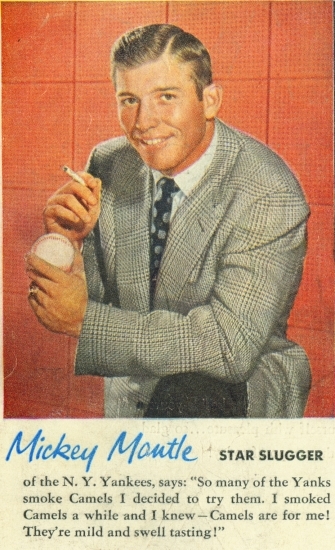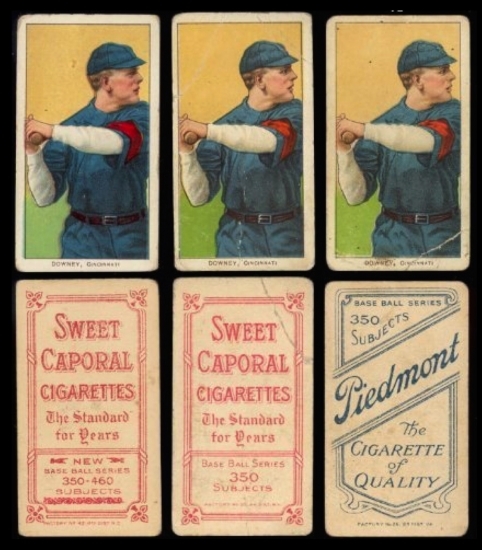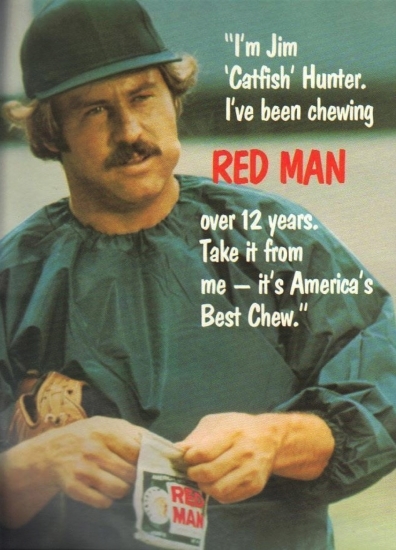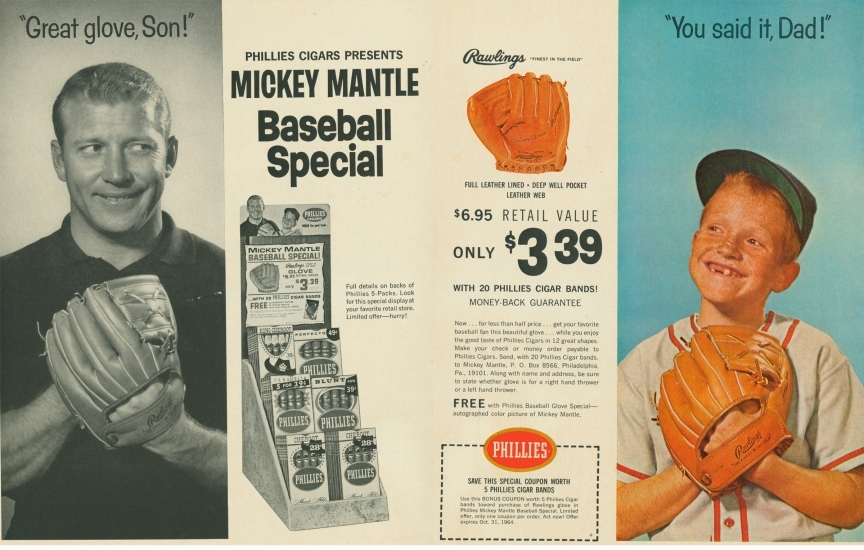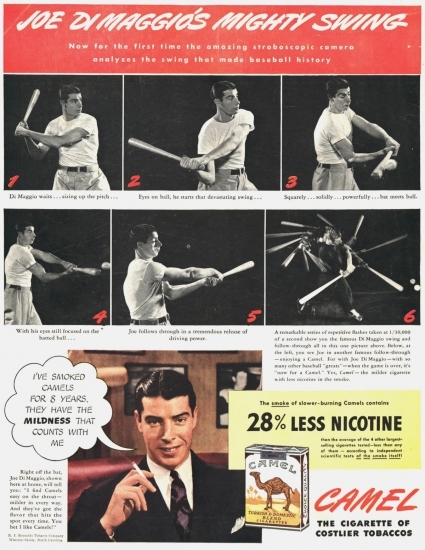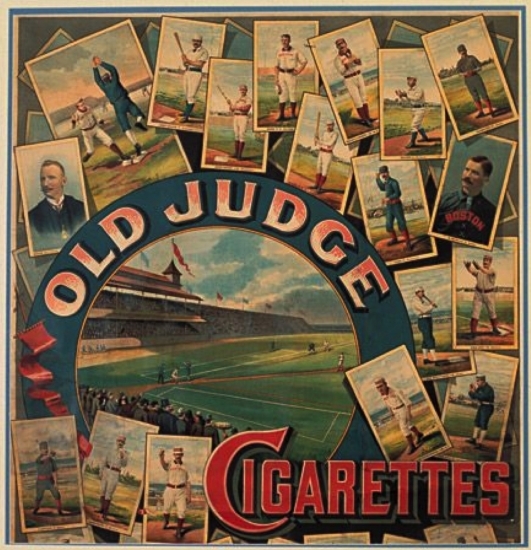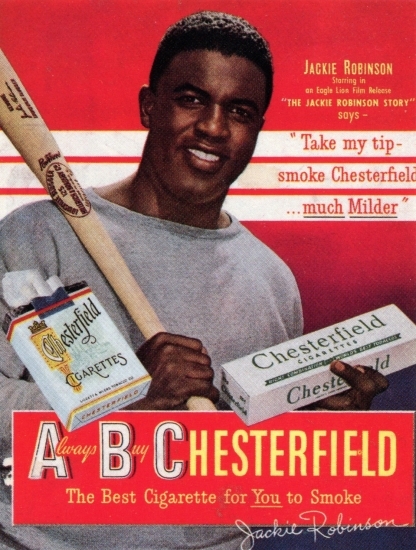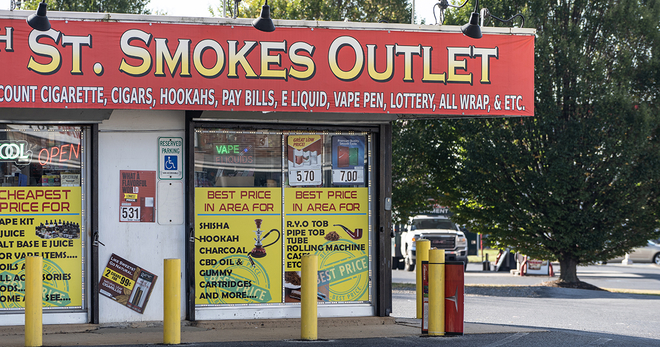A look at how Big Tobacco infiltrated baseball
Over a century ago, Big Tobacco began heavily investing in tactics to link tobacco with baseball. These tactics included in-game promotions, stadium advertising, and the creation of collectible baseball cards that were included inside packs of cigarettes.
At a time when the health consequences of tobacco use were unknown, many early major league baseball players smoked cigarettes and used chewing tobacco on the field to provide a nicotine rush during games. Chewing tobacco soon became intertwined with major league baseball, and today smokeless tobacco products are still popular among baseball players, both professional and amateur.
Here’s a closer look at three major ways the tobacco industry infiltrated baseball culture.
1. Baseball cards
Who invented baseball cards?
Many people may not know that baseball cards are rooted in the tobacco industry.
The earliest baseball cards were placed inside packs of cigarettes. “Cigarette companies used cards with images of baseball players to stiffen their packs of loosely packed tobacco and thin paper wrappings as early as 1888,” according to the Stanford University Research into the Impact of Tobacco Advertising (SRITA).
For many years, some players were depicted on the cards with a bulge of chewing tobacco in their mouths, making them spokespeople for Big Tobacco.
2. In-game promotions
Where does the term bullpen come from?
In 1912, the tobacco company W.T. Blackwell and Co., manufacturers of Bull Durham tobacco, created a successful in-game promotion by installing branded billboards at most major league stadiums and promising that any baseball player who hit the signs would receive $50 – equivalent to more than $1,000 today.
“The prominence of the bull signage and its association with what was becoming America’s pastime led to enormous profits for the company and perhaps the origin of the term ‘bullpen’ to refer to the warm-up area for pitchers,” according to SRITA.
3. Stadium advertising
Can tobacco companies advertise at baseball stadiums?
In the 1910s and decades after, a trip to a major league ballpark often included a good view of a tobacco ad, often above the scoreboard or exits.
This method of advertising became especially valuable for tobacco companies after 1971, when tobacco commercials were prohibited from appearing on television. As SRITA explains, “Without technically advertising on television, cigarette companies received significant ad time on television through these billboards.”
Baseball has appeared in tobacco advertisements in many other forms. Babe Ruth, Joe DiMaggio, and Mickey Mantle are just a few of the famous players who have appeared in tobacco ads.
Ongoing effects of tobacco industry influence in baseball
Can baseball players use ZYN?
Smokeless tobacco, which can cause cancer, is associated with diseases of the mouth, and can lead to nicotine addiction, remains associated with baseball to this day.
Major League Baseball has taken some steps to limit the use of smokeless tobacco among players, including a 2016 rule prohibiting smokeless tobacco use during games for all new players under risk of penalty.
Some players have since switched to oral nicotine products such as Zyn, which is not technically a smokeless tobacco product because it is made from nicotine powder and does not contain tobacco leaf. Regardless of its source, nicotine is an addictive substance.
The use of smokeless tobacco products in baseball does not only extend to professional athletes, but also to younger amateur players. Data published in 2015 showed that smokeless tobacco is particularly popular with high school athletes, who use smokeless tobacco at a higher rate than non-athletes.
More recently, the prevalence of youth use of smokeless tobacco products has risen (0.9% in 2021 to 1.3% in 2022) as has youth use of oral nicotine pouches (0.8% in 2021 to 1.1% in 2022) according to annual NYTS data.
As more data emerge on youth use of both smokeless tobacco products and oral nicotine pouches, Major League Baseball may consider taking additional steps to limit tobacco industry influence at its games.
*Images courtesy of Stanford Research into the Impact of Tobacco Advertising
More in tobacco industry marketing
Want support quitting? Join EX Program
By clicking JOIN, you agree to the Terms, Text Message Terms and Privacy Policy.
Msg&Data rates may apply; msgs are automated.

